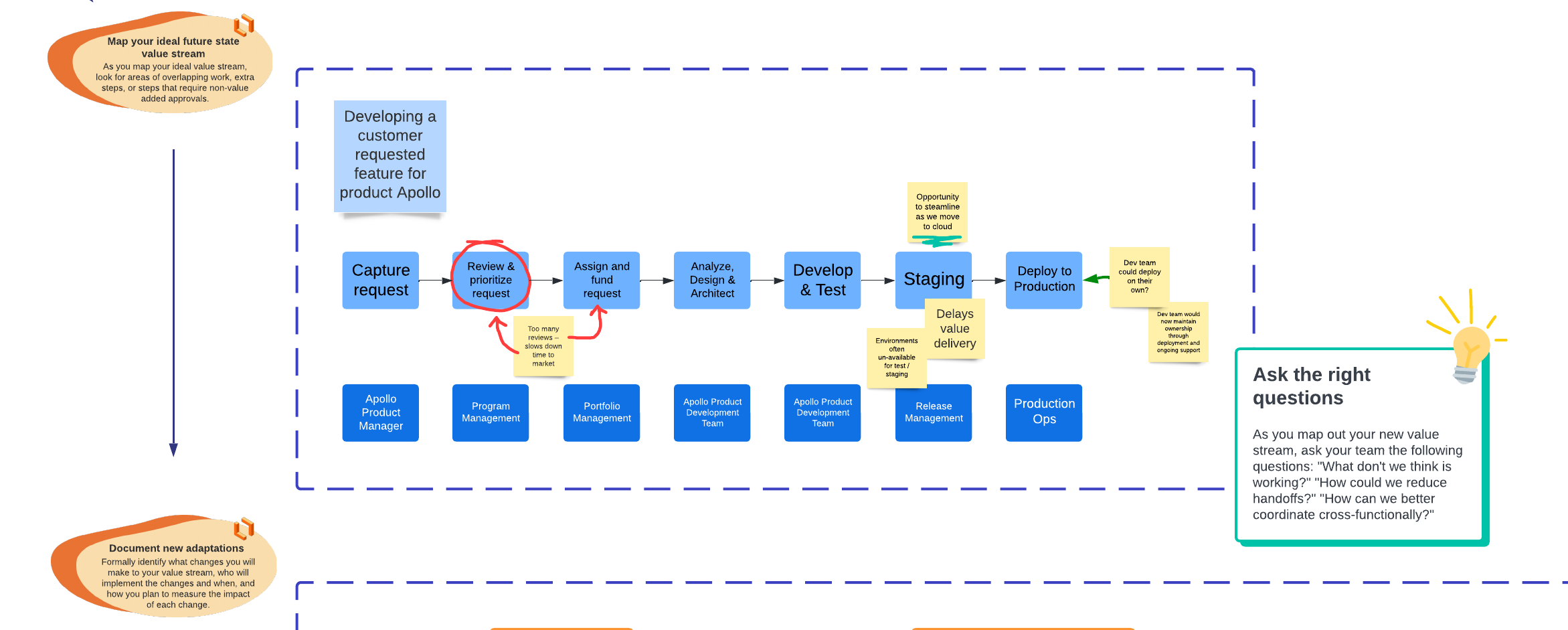Lucidchart is a fantastic resource for value stream mapping but value stream management—that is not only mapping but also optimizing value streams—is an ongoing process that requires measuring learning adapting and repeating the process. Lucidspark’s flexibility makes it easier to collaboratively brainstorm improvements capture feedback and share learnings so the business will continually grow more efficiently.
By documenting not only your value stream maps in Lucidchart—but also your ideas findings and adaptations in Lucidspark—you create a clear record in Lucid for new team members and stakeholders to understand how the value streams have evolved over time to reach their current state. Centralizing and sharing this information leads to continuous alignment and improvement.
How to use Lucidchart and Lucidspark to manage value streams:
- Bring in both leaders and practitioners across the organization to brainstorm what main value streams exist within your organization in Lucidspark. These could be things like “billing a customer for services” or “launching a new product.”
- Pick which one you’d like to focus on and map the current state of this value stream in Lucidchart. Measure the amount of time spent in and between each step and use Lucidchart’s intelligent formulas to automatically calculate flow efficiency.

- Then jump into Lucidspark to identify waste in the value stream and brainstorm improvements. Use the pen tool sticky notes and comments to mark up the value stream.

- Map out your ideal future state of the value stream in Lucidchart and identify metrics that you will use to measure the success of the changes you make.
Check out the value stream workshop template to get started!


